JDS Labs Element IV DAC AMP Review – Transparent Sound From The USA
JDS Labs Element IV is a $549 USD Desktop DAC Headphone AMP, with a huge 3.2W of clean power output tetradeca output buffer, Auto Gain, Preamp output, OLED Display with Gorilla Glass protection, Parametric EQ, and DC protection safety. Today we review the mighty JDS Element IV, and also compare it with other DAC AMPs, including Rose Technics RT-5000 (699 USD), HIFIMAN EF500 (459 USD), and Burson PlayMate 2 (544 USD).
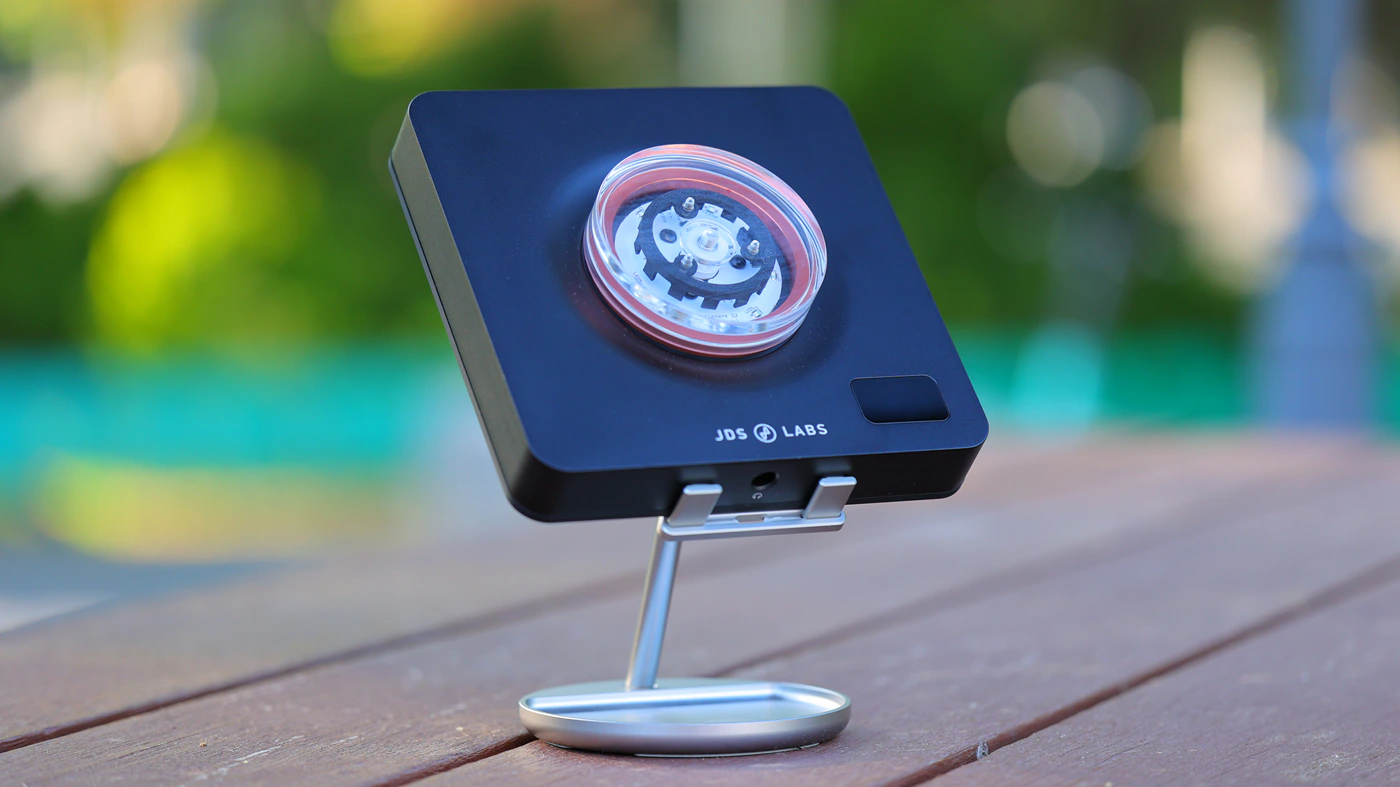
Introduction
JDS Labs brings a new variant of their Element series of DAC Headphone AMPs, but this time with limited stock, but a reimagined design, they take on the world, implementing better EQ, better headphone driving parts and better overall build quality, as this time around we have the version with the transparent volume wheel in for review.

As an Amazon Influencer, I earn from qualifying purchases, and using the purchase links in my reviews helps me maintain this website and Youtube Channel. Huge thanks to JDS Labs for providing us with the sample for this review.
Product Link
Amazon – https://amzn.to/41xYgUf
Official Link – https://jdslabs.com/product/element-iv/
Build Quality – Design
JDS Labs Element IV is built on the idea of remaining a product, while keeping the same popular form factor and design. The new IV variation integrates the JDS Labs Proprietary third-generation XMOS hardware and firmware, integrated with their latest discrete optical encoder. I know we all frown upon installing apps for EQ and tweaking the firmware settings of a DAC AMP, so JDS Labs implemented a new Core Web App that doesn’t need any installation for you to tweak the 12-band EQ and built different profiles for each one of your headphones inside of th eElement IV.
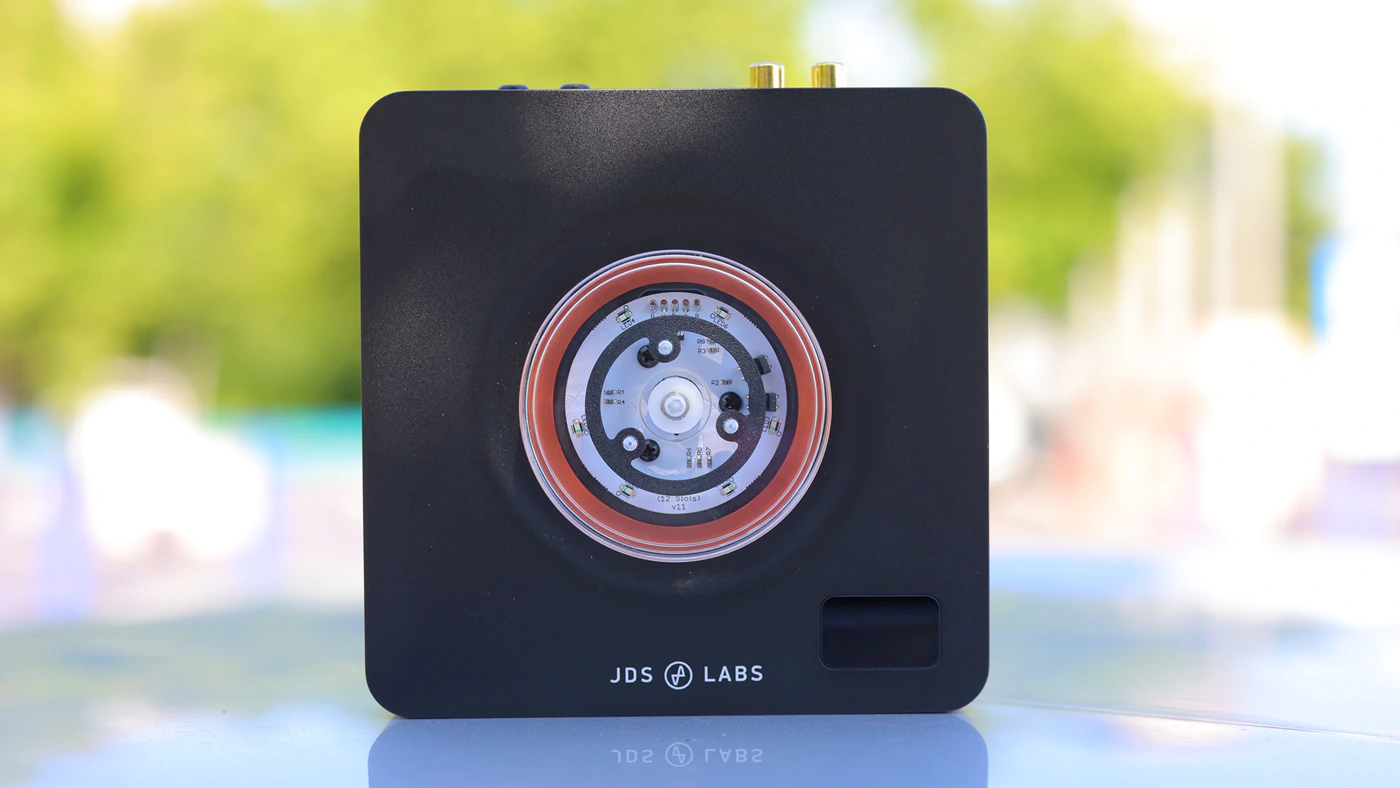
JDS Labs has a total of 3.2W of power per channel, so 6.4W of actual power output for the entire DAC AMP, but with an Auto Gain function that sets the gain as you turn beyond the point of 0dB for high, to make sure you’re not frying your IEMs nor underpowering your headphones. As Element IV is also a high-end DAC with PRE, you can toggle between the headphone output and PRE output at the push of a button, or rather on the tactile volume knob, and listening volume and EQ profiles are stored separately for Line Out and Headphone Outputs.
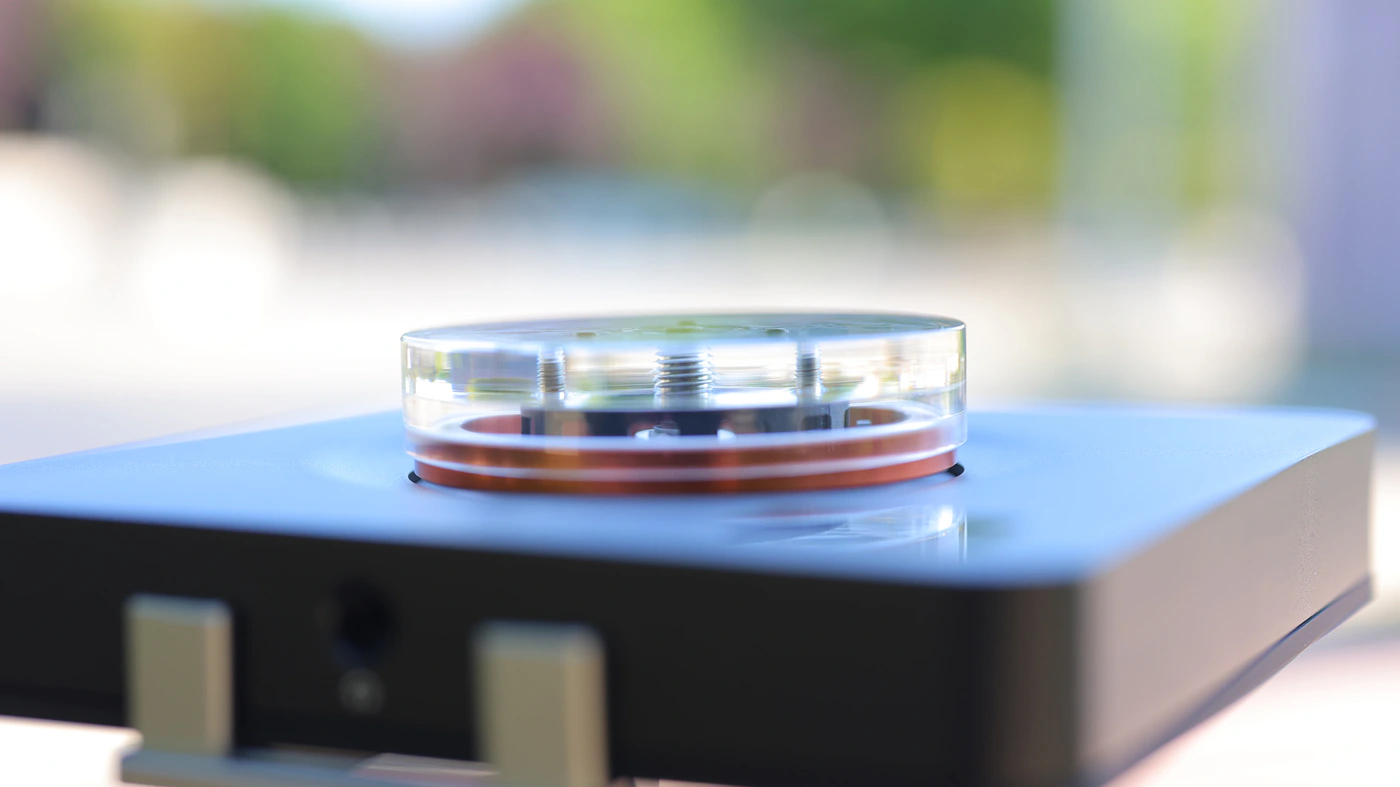
To make sure you can see what you’re doing, JDS Labs has an OLED display with Gorilla Glass for the Element IV, and it has a USB nType-C input, with up to 32 Bit / 768 kHz data rate for PCM signals. You can engage the 12-Band EQ for signals from 44.1 kHz up to 192 kHz, with a simpler, 2-Band EQ supported for higher PCM rates.
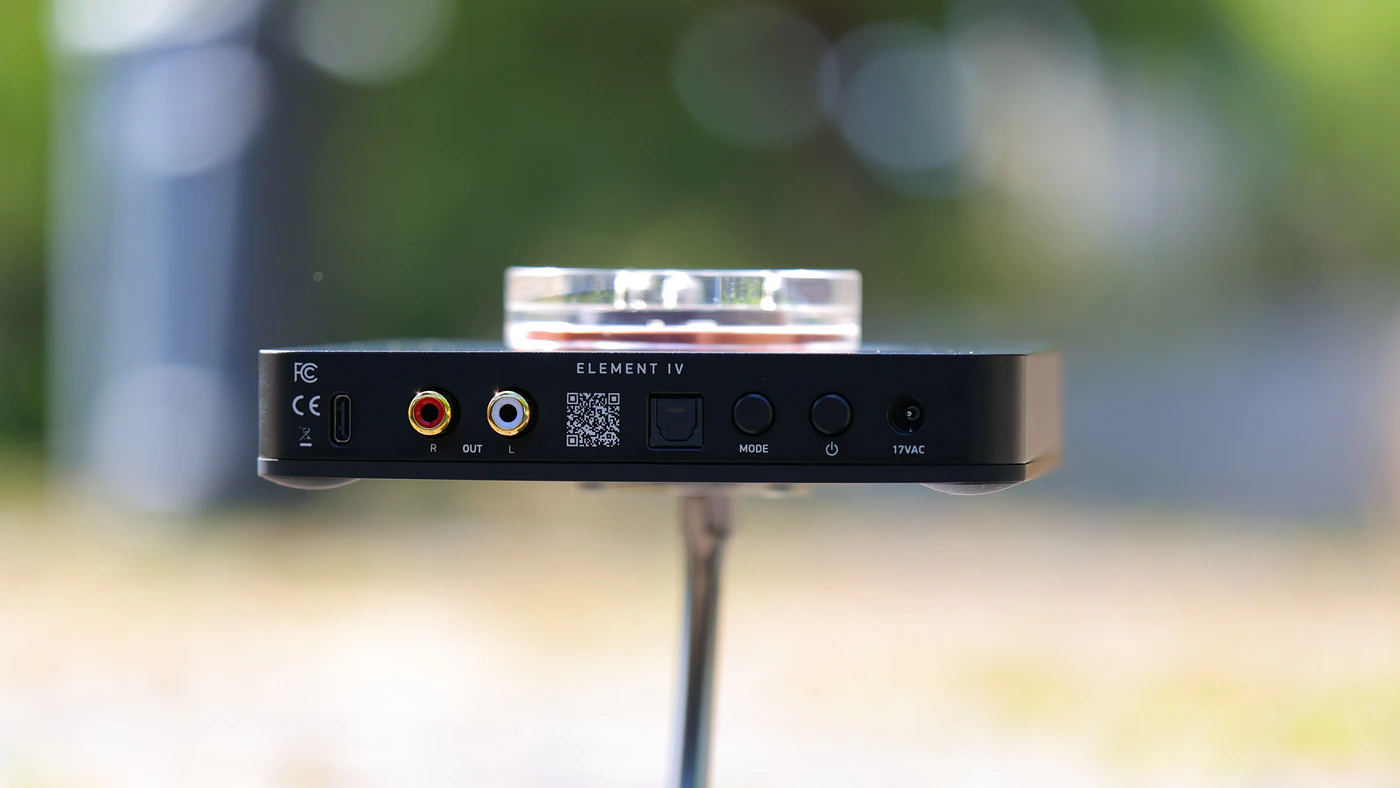
If you look closely, JDS Labs Element series has always been defined by the huge volume wheel at the center, and Element IV includes the second generation optical discrete encoder, with 50% more fins, for a faster volume response, and a large steel haft for butter smooth rotation. It also supports EQ, 12 Band PEQ in Real time, with no downloads, and with a perfect channel balance, down to -127.5 dBFS. There should be no pops during startup as Element IV incorporates the JDS Labs DC protection, and you can also toggle between UAC2 and UAC1 for consoles.
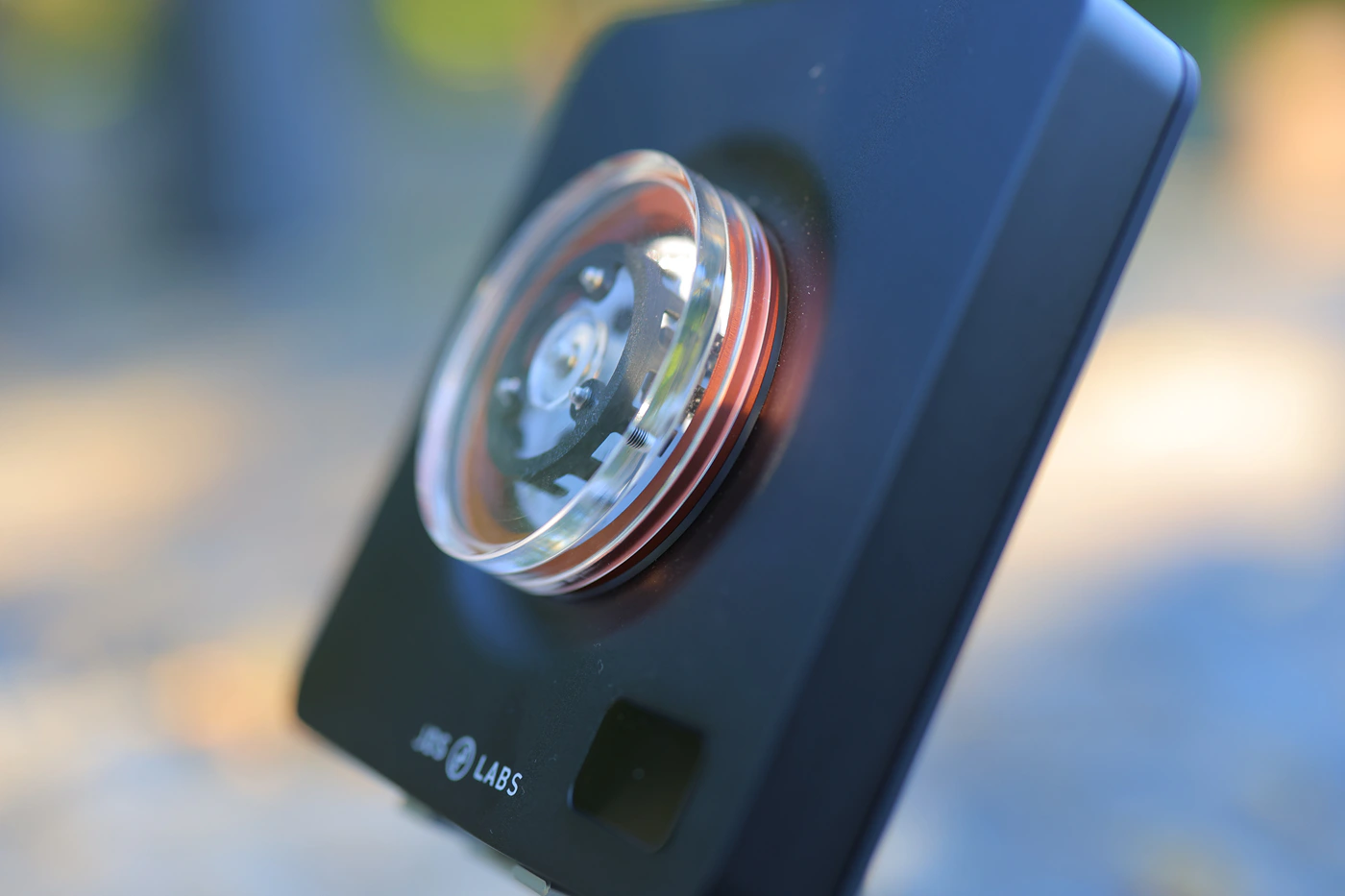
Last part you should know about is the external transformer, a huge, heavy power brick that has the plus minus 17 Volt Rails, as Element IV is entirely powered by these AC transformers, which has 13 regulators, ensuring consistent rail voltage, super low ripple and mains isolation. The D/A stage is powered by the LT3045 regulator.
USB DAC – Subjective Usage
Every single JDS Labs product so far comes with a huge power brick, which is both a highlight thanks to its outstanding sonic quality and construction, but also means that you have to bear a power outlet to use the Element IV. Overall, I am in love with the new transparent volume wheel, it is not as much of a fingerprint magnet as I would have guessed and the whole unit is very solid, just like the previous Element III.
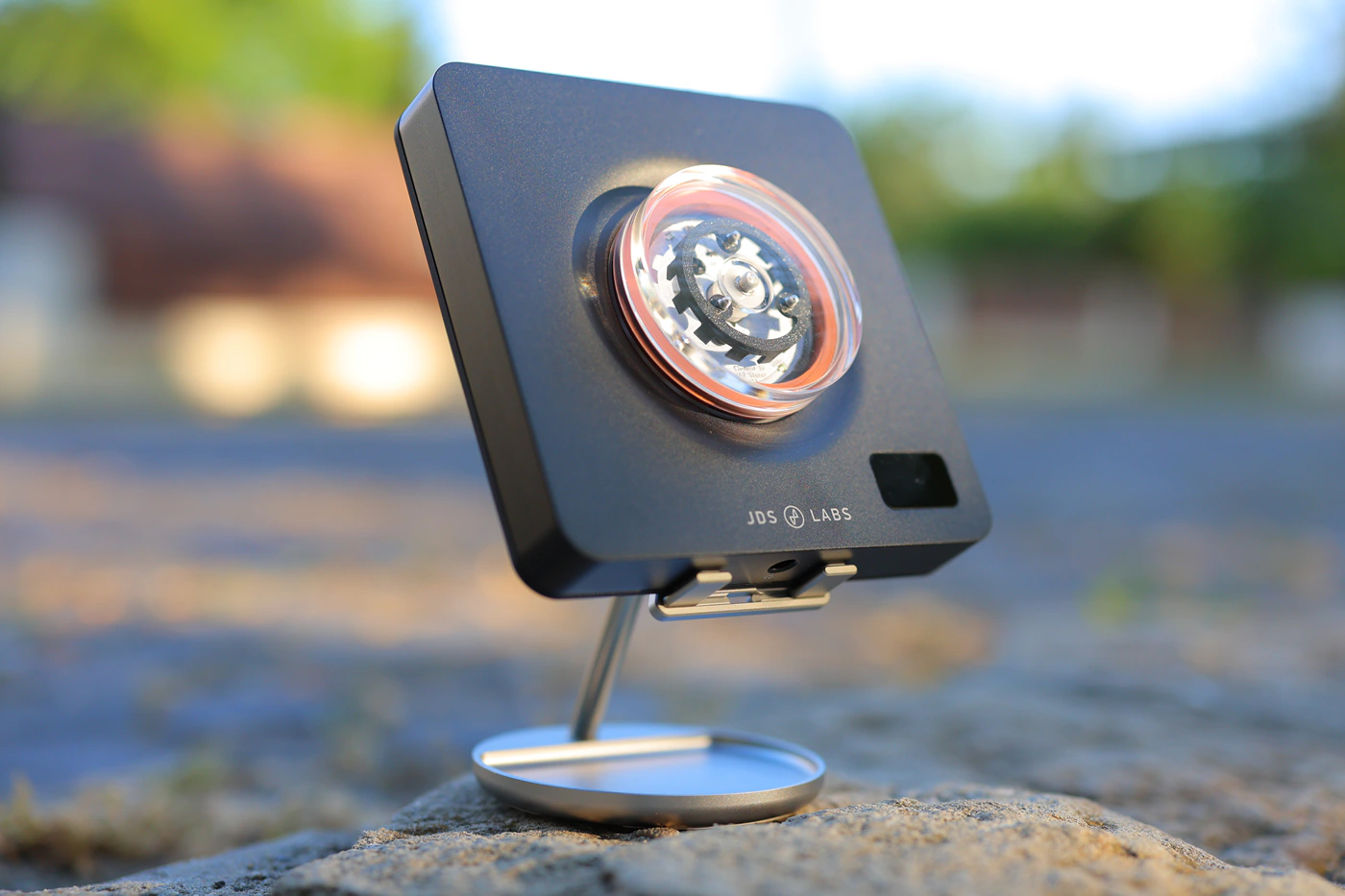
You can find all the relevant info on the mini display on the lower right corner, and you can actually order the unit with a 4.4mm output, although I am using a ddHiFi adapter to use the JDS Labs Element IV with balanced cables as I usually have much nicer cables in the balanced format. JDS Labs believes so much in the single ended principle that they only have RCA Preamp Line Outs at the back of the Element IV and no XLR or 4.4mm balanced line outs. This is not an issue as the line out / preamp output of the Element IV is particularly free of background noise and clean, but it is something to take into account if you already have a fully balanced setup. I love the really long cable for the power brick, making using the new Element IV convenient and practical.
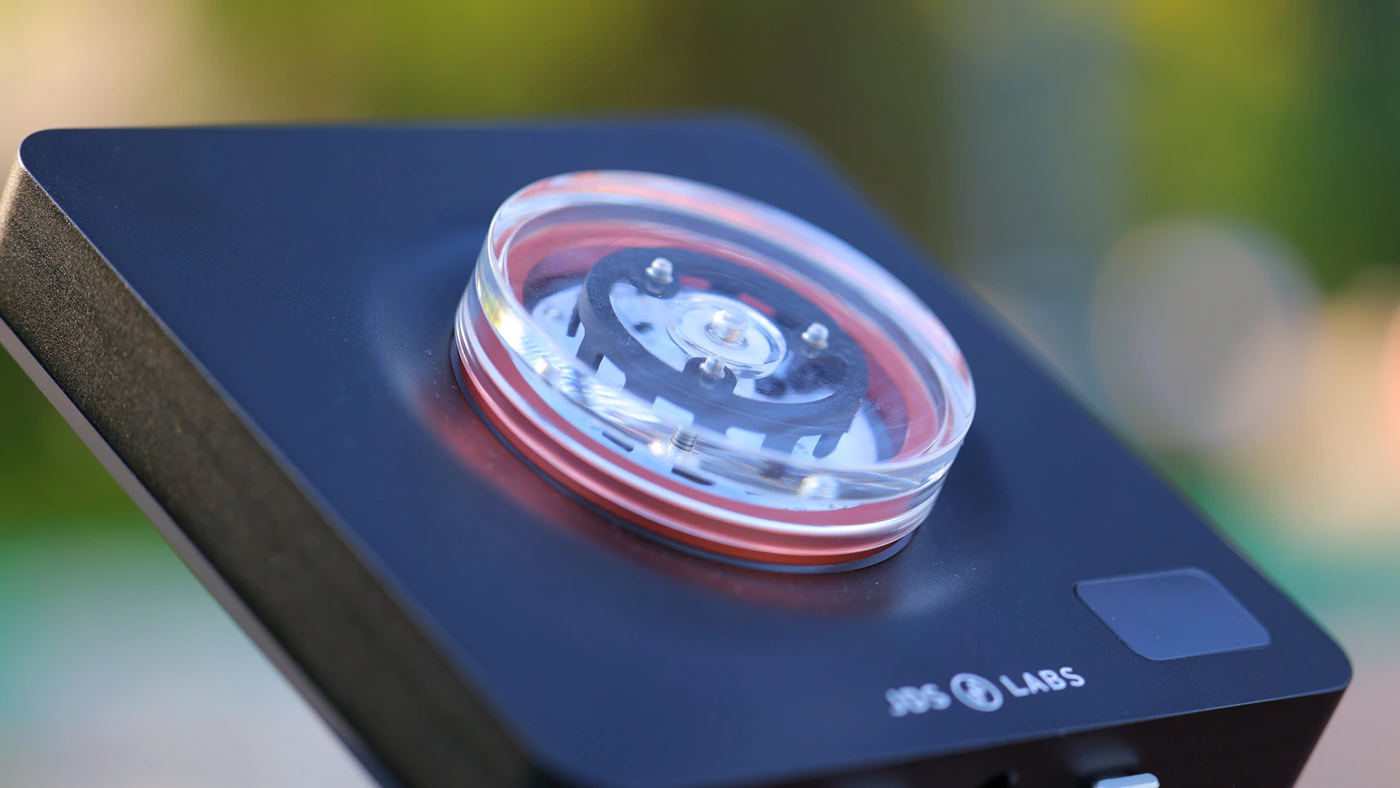
It has been a really long while since I’ve heard of a DAC AMP with such a low noise floor and outstanding control, and Element IV is slowly taking over my setup as a full-time favorite. I believe that the only real drawback is that it does not come with two headphone outputs, a 4.4mm output surely would have been nice. USB DAC function is perfect, no delays, no interruptions, no artifacts, it is adequate for real-time playback, gaming, video watching, there is less than 10 ms of delay, so less than a single frame even for fast content.
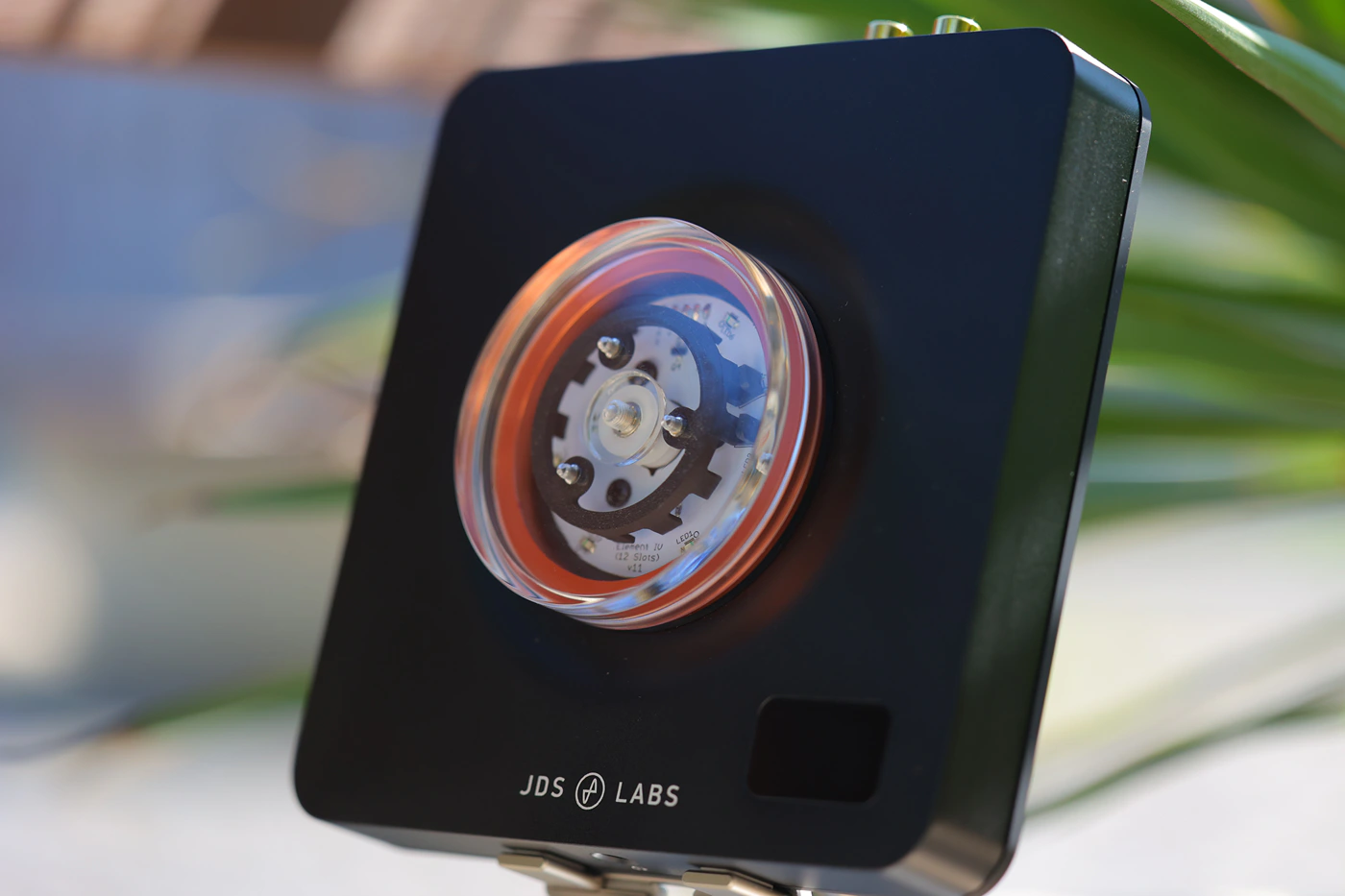
JDS Labs always had a special appeal for enthusiasts and professionals, and I feel like the new EQ is less practical than the older one, because now you have to know a bit about EQ to actually take full advantage of it. This being said, it allows for much better control, better results, and more precise EQing. Overall, it is a more professional device. Ordering it with the transparent volume wheel means that you will see the beautiful white ring of light around it from a lateral position, but from top you can see the individual LEDs which are not high in number. Also, the new transparent wheel is prone to fingerprints.
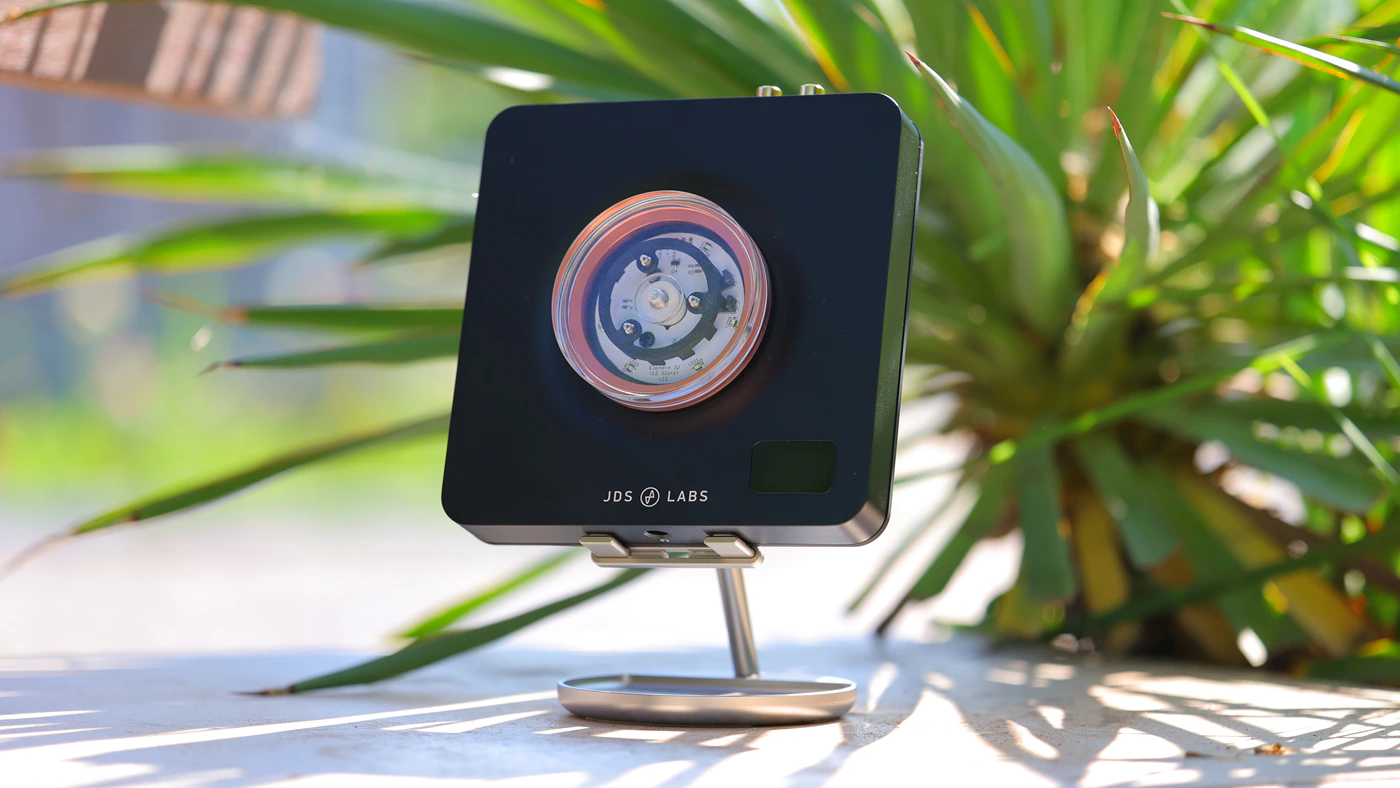
Element IV gets really hot during usage, it is best to not place it on top of another DAC/AMP/Device in general. Volume acceleration works wonders, you can quickly turn the wheel to get a quick increase in volume, which is really nice. Switching between PRE and Headphone Output can be done quickly by pressing on the volume wheel, but you can configure it to mute the sound. You can also switch between inputs using a button at the back.
Sound Quality
Pairings – I have paired the new JDS Labs Element IV with a selection of earphones and headphones including KBEar Cepheus, Crosszone CZ-10 Enhanced, NFAudio NE4, NfAudio NA2+, Rose Technics QT-X, Palma DHS-1, Audeze MM-100, HIFIMAN Shangri-La Electrostatic System, Kiwi Ears Atheia, FiiO FT7, ZiiGaat Luna, Erzetich Thalia, Erzetich Mania 2024, Moritz Audio Enzo, HIFIMAN Susvara Unveiled, Dunu Vulkan 2, Sivga Peng, HarmonicDyne Baroque, Mrotiz Dragon, Sivga AIVA 2, Soundz Flame, YanYin Canon, and RAPTGO LEAF D01.
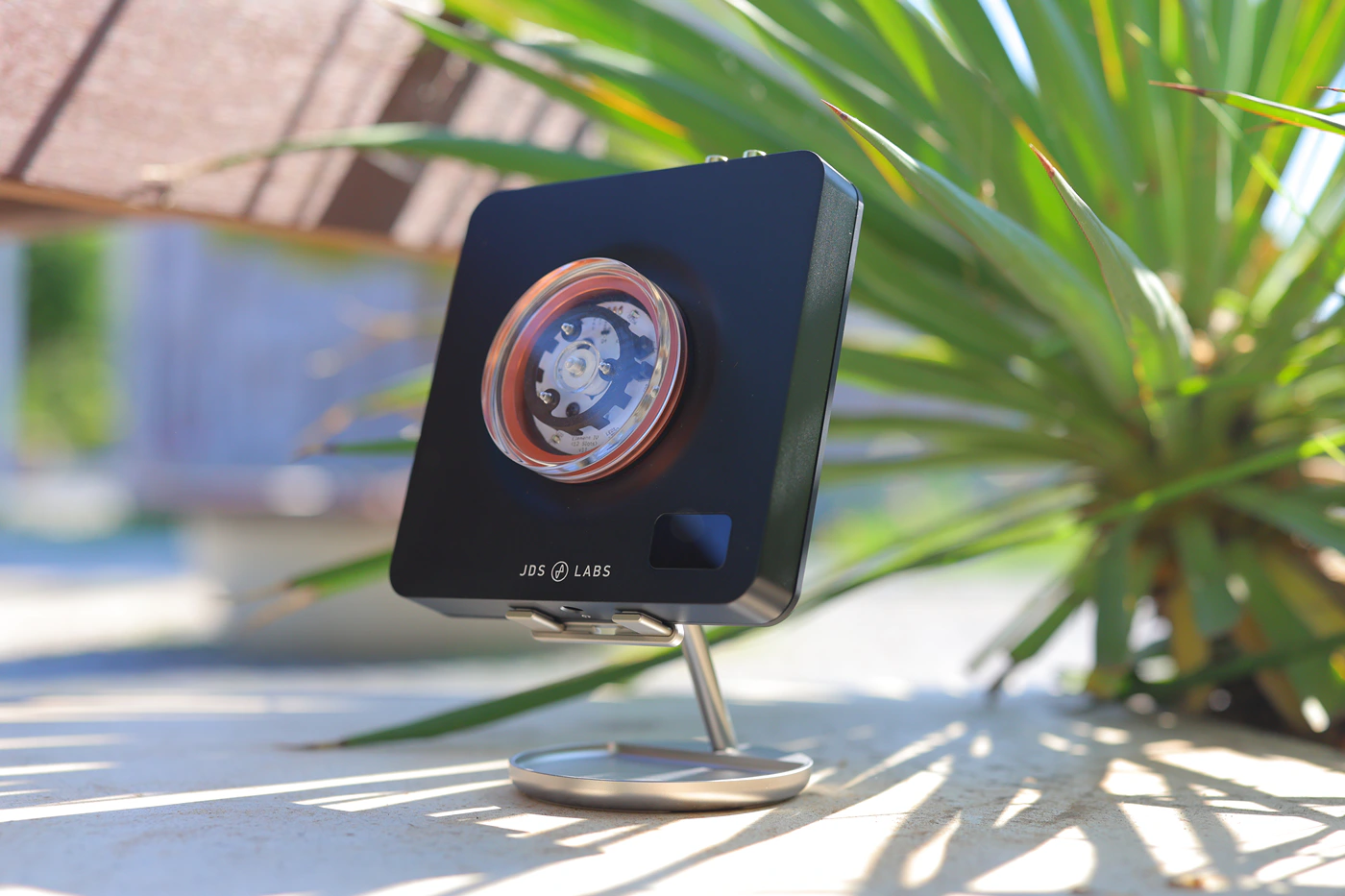
The reason the list of headphones and IEMs is so long is that I actually love the signature and versatility of the Element IV, and it can easily be a better choice than FiiO K17, the larger DAC AMP I am using at the moment. If there is any downside to the Element IV, it only has one 6.35mm single ended headphone output, and I have to use adapters with IEMs and headphones that have a balanced cable. It also has only SE outputs for the PRE and Line out.
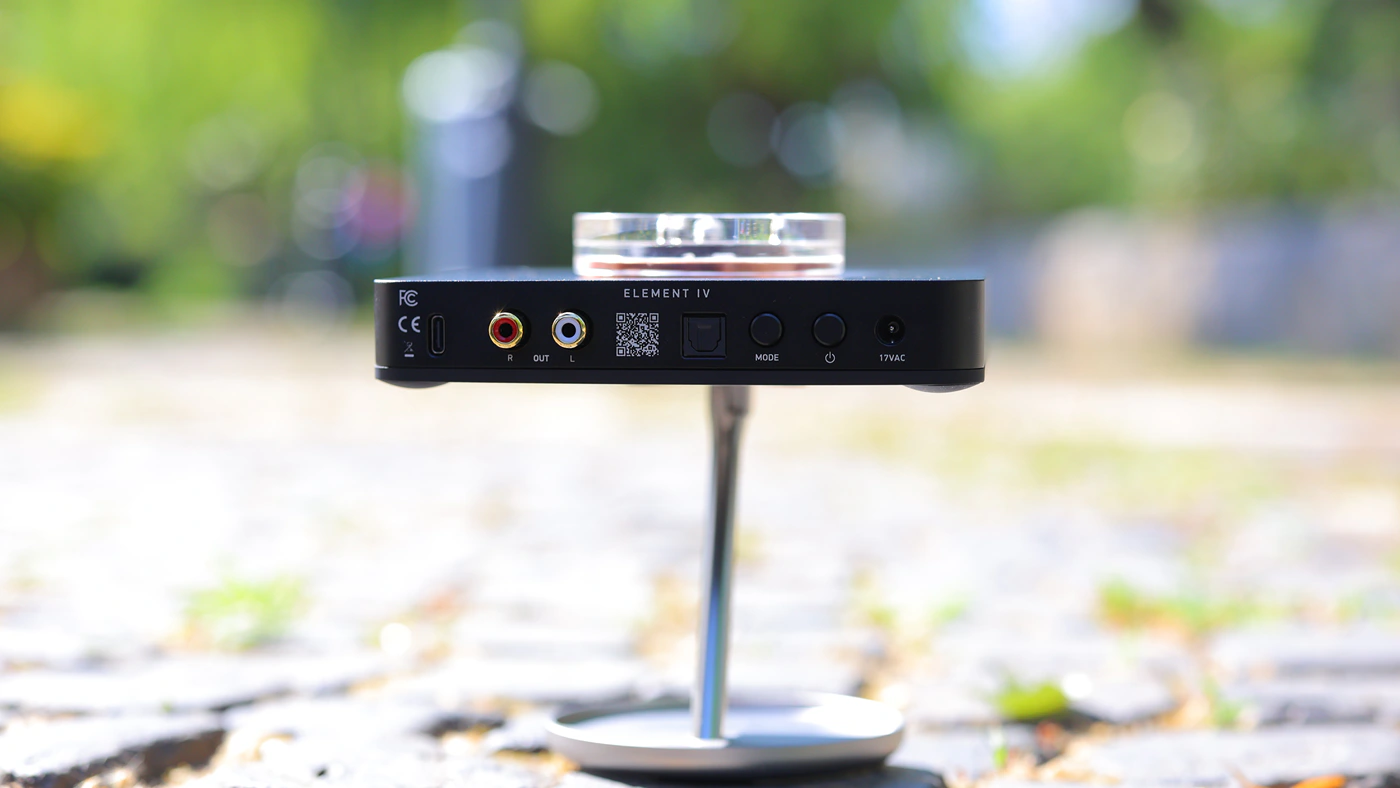
Power is plentiful, you will be driving all your hard-to-drive headphones, including HIFIMAN HE1000 Unveiled, Susvara Unveiled, although Susvara the Original might be too much for Element IV to handle. But most headphones do really well when combined with the Element IV.
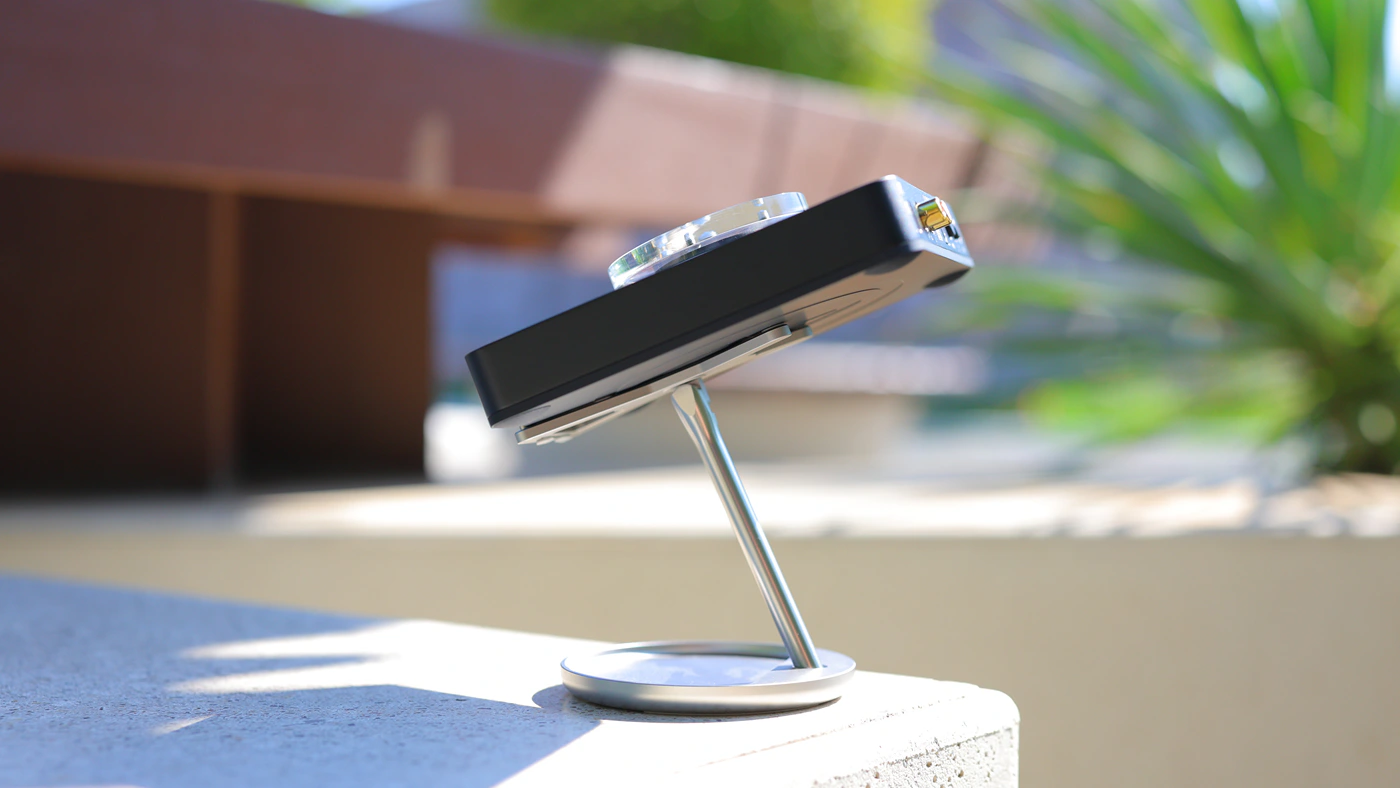
Overall Signature – Element IV is a balanced sounding DAc AMP with an extremely detailed and revealing presentation, but a bit of smoothness around the harder edges. It is highly transparent, it does not add any kind of bass, or treble to the mix, but sounds linear. There’s a good amount of kick and punch, it is highly dynamic and has a huge headroom. It is remarkably less distorted at higher volumes compared to what the market typically offers around the price point, but has a slight effect of pulling the voices back, not all instruments and not the entire midrange, but voices in particular are ever so slightly recessed. Element IV balances in a huge soundstage that allows music to expand, but it seems to always respect the song, so you often get surprised by a sound that comes as if it is coming from far out of your headphones, while most of the song is playing at a natural level of soundstage. Music that is highly holographic, wide, will sound as such, but element 4 does not expand on music that is generally more intimate.
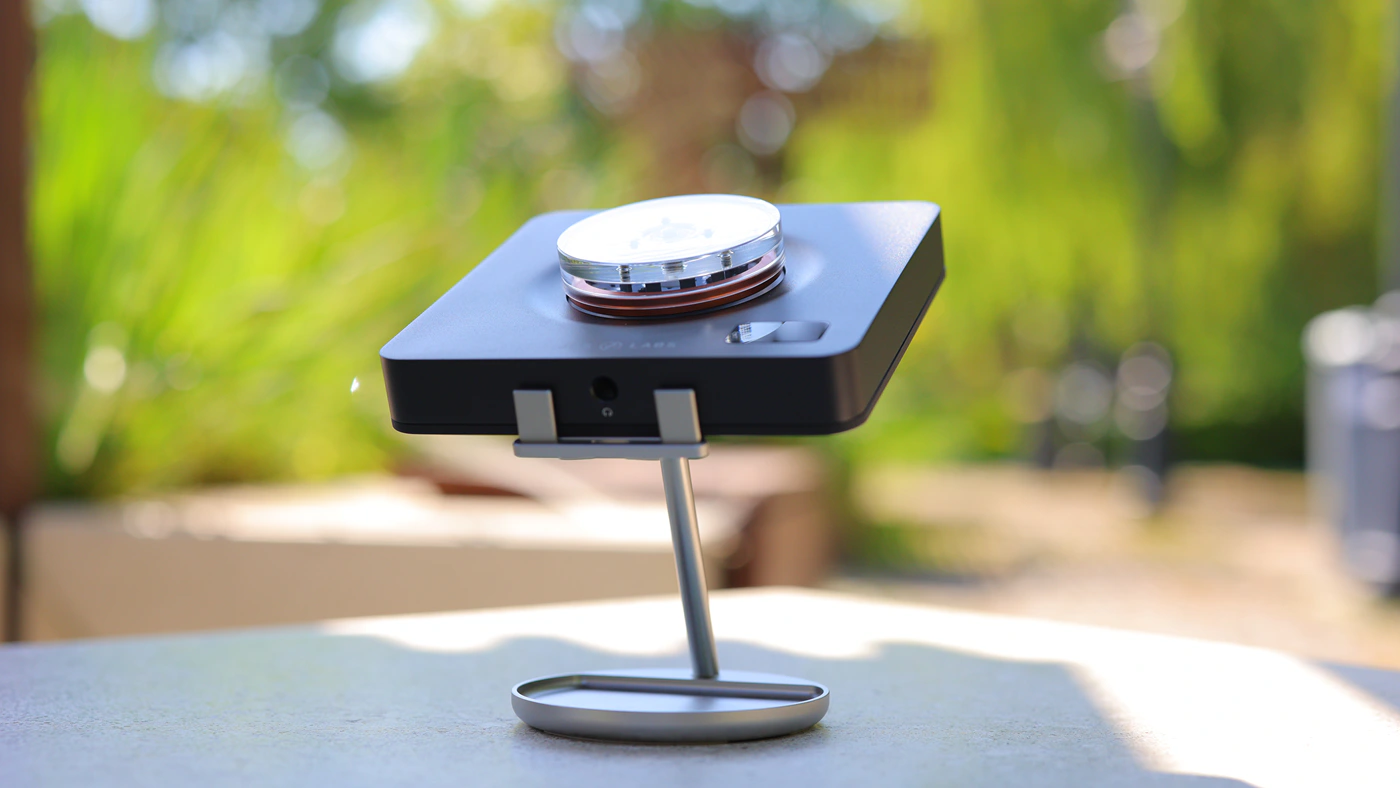
Bass – Starting from the bass, Element 4 is a full sounding, deep and tight controlled DAC AMP. This helps warm and bassy IEMS gain a better control, including one of my favorites, the Moritz Enzo, but it also means that brighter, or neutral sounding IEMS will not gain more bass, at default. The trick here is that you can engage a precise parametric EQ within Element IV and add as much bass as you want, where you want, and it has a huge headroom for driving power and control, so I was able to give even HIFIMAN Susvara Unveiled more than 6 dB of extra bass, and the same with HIFIMAN Shangri-La mini. While at default it is highly technical, fast and tight, it also has more potential than most DAC AMPs as it can apply this EQ in real time with no audible delay, and Element IV is perfect for tweaking.
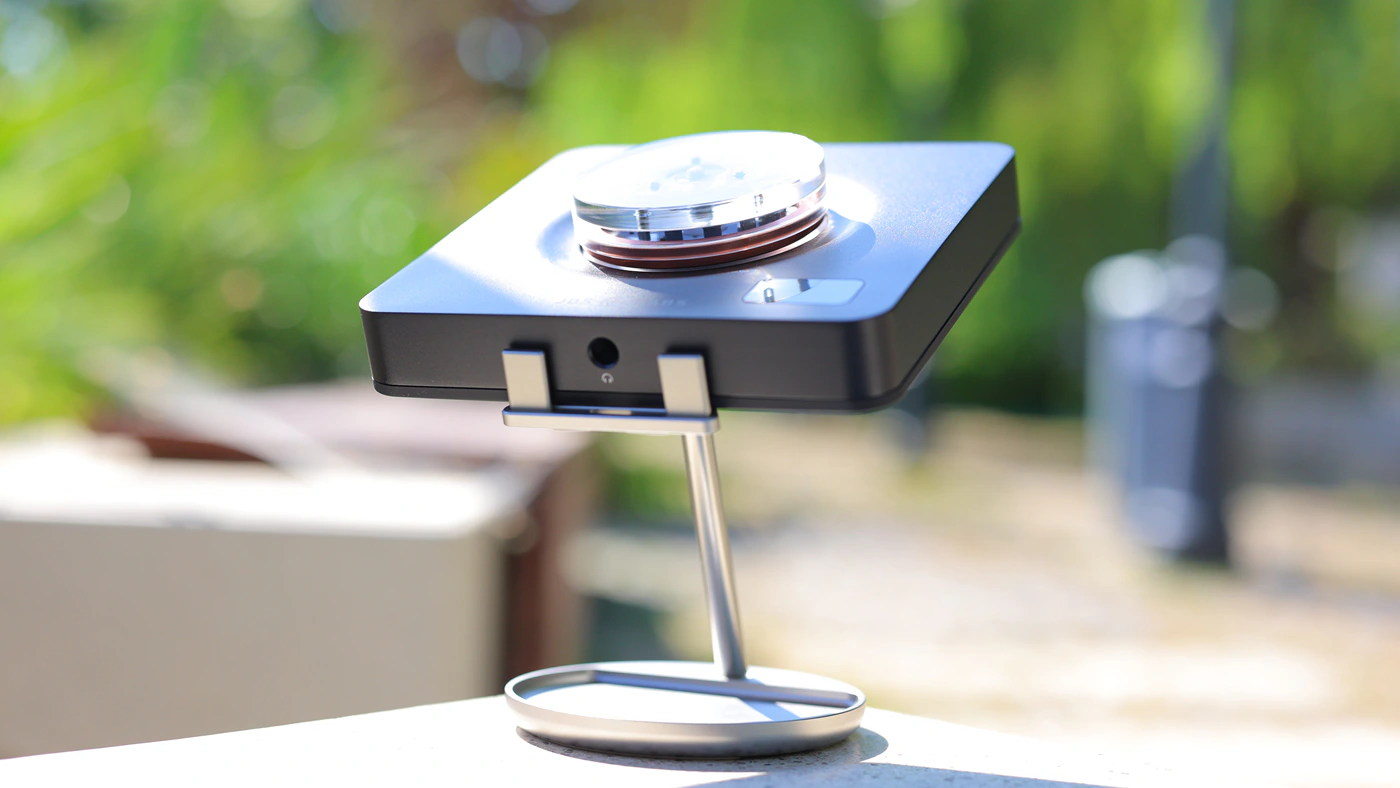
Midrange – In the middle, JDS Labs made Element IV transparent, highly resolute and detailed, with a rich, harmonically cohesive texture. It gives female voices a slightly higher presence than it gives male voices, but pulls both slightly compared to most elements, voices are always a tiny bit quieter than most instruments. This makes me push the volume a bit more with Element IV than with most DAC AMPs, but when a song is instrumental only, you will have it set at a more traditional volume.
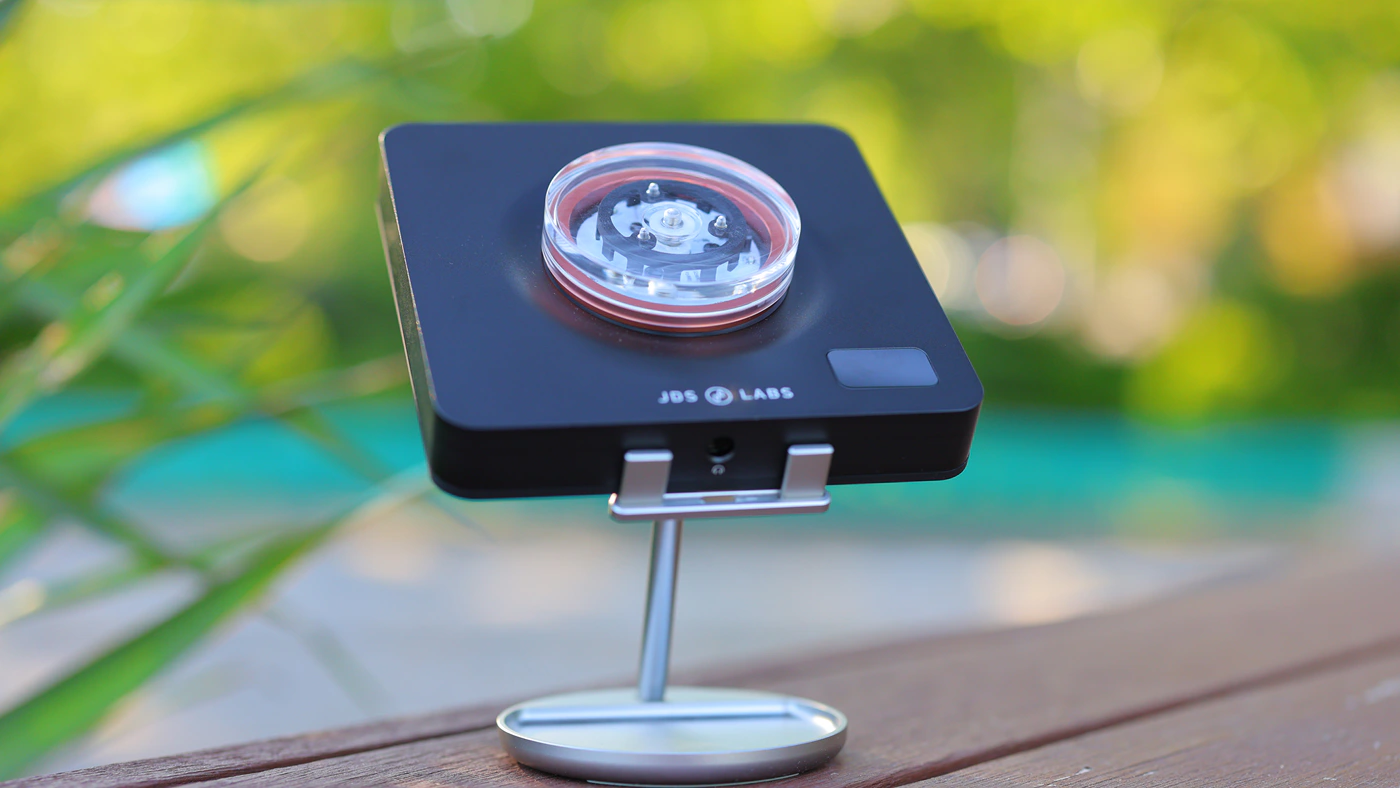
Treble – Most JDS Labs products had a different treble tuning from one another and Element IV makes no exception. We get a new, smoother, more rich treble presentation that avoids ever being harsh, too sharp or fatiguing, at the cost of Element IV sounding a bit relaxed and laid back compared to Element III and the rest of the JDS Labs Arsenal. This does not reduce the sharpness, clarity and resolution of the sound in any way, but it allows Element IV to breathe, to shine and shimmer, giving it space to sound detailed, for you to hear and understand micro bits of information without feeling fatigued from the treble. It does take away a bit of the edge technical death metal tends to have, but overall it is a good balance, as you can also add as much top end as you need using the embedded parametric EQ.
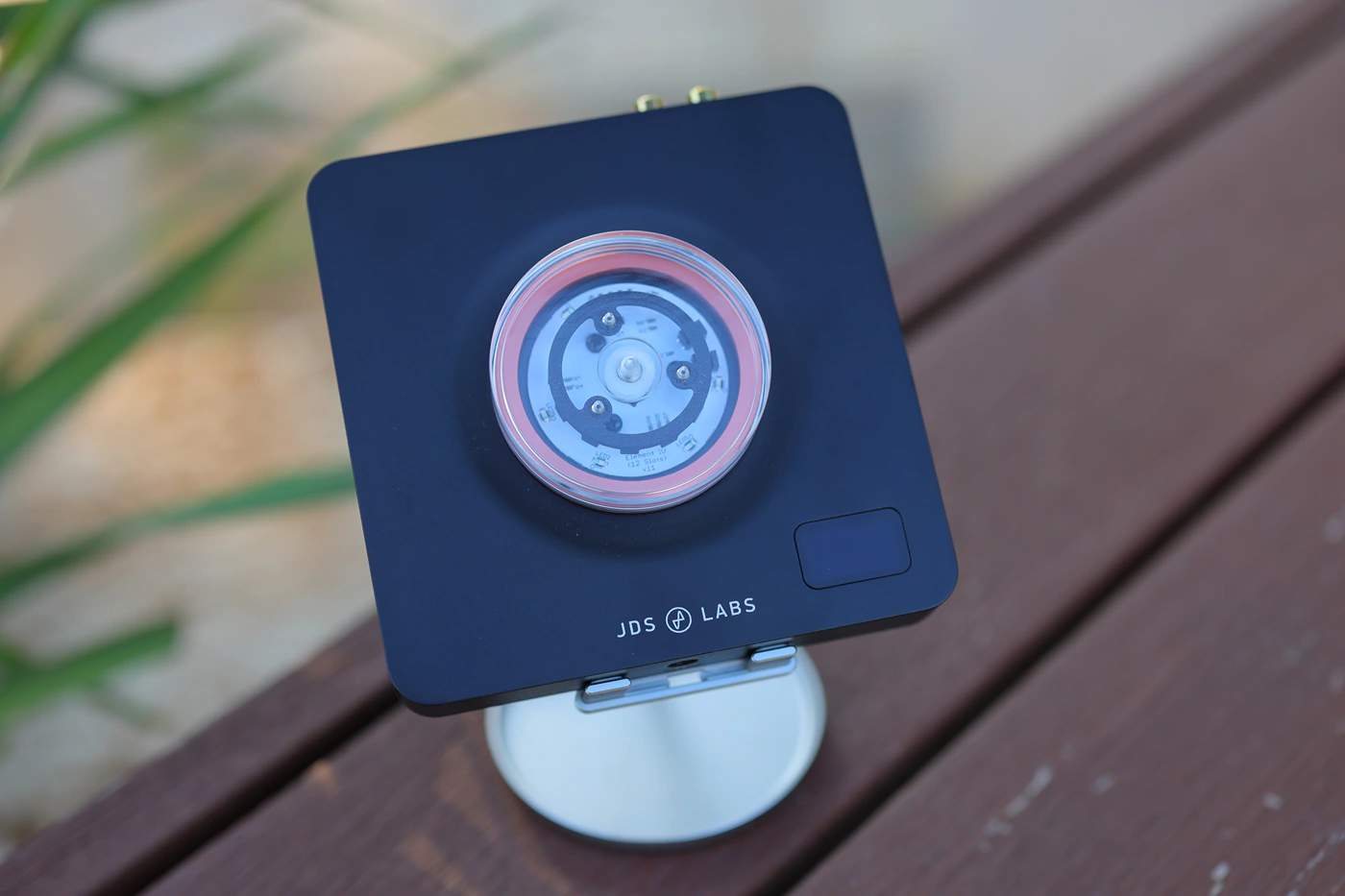
Dynamics / PRaT / Textures – I think this is one of the characteristics that JDS Labs improved the most compared to Element III, as now we have a richer, more cohesive and more organic texture, whilst Element IV can reveal more detail and information than its predecessor could. Element IV has a smoother, more relaxed texture presentation, it puts no pressure on the song to reveal harsh edges, and even with strongly technical and analytical headphones or IEMS, it ends up sounding rich and detailed, instead of harsh and fatiguing. Even with Final Audio A8000, it keeps control, and creates a rather pleasing sound.
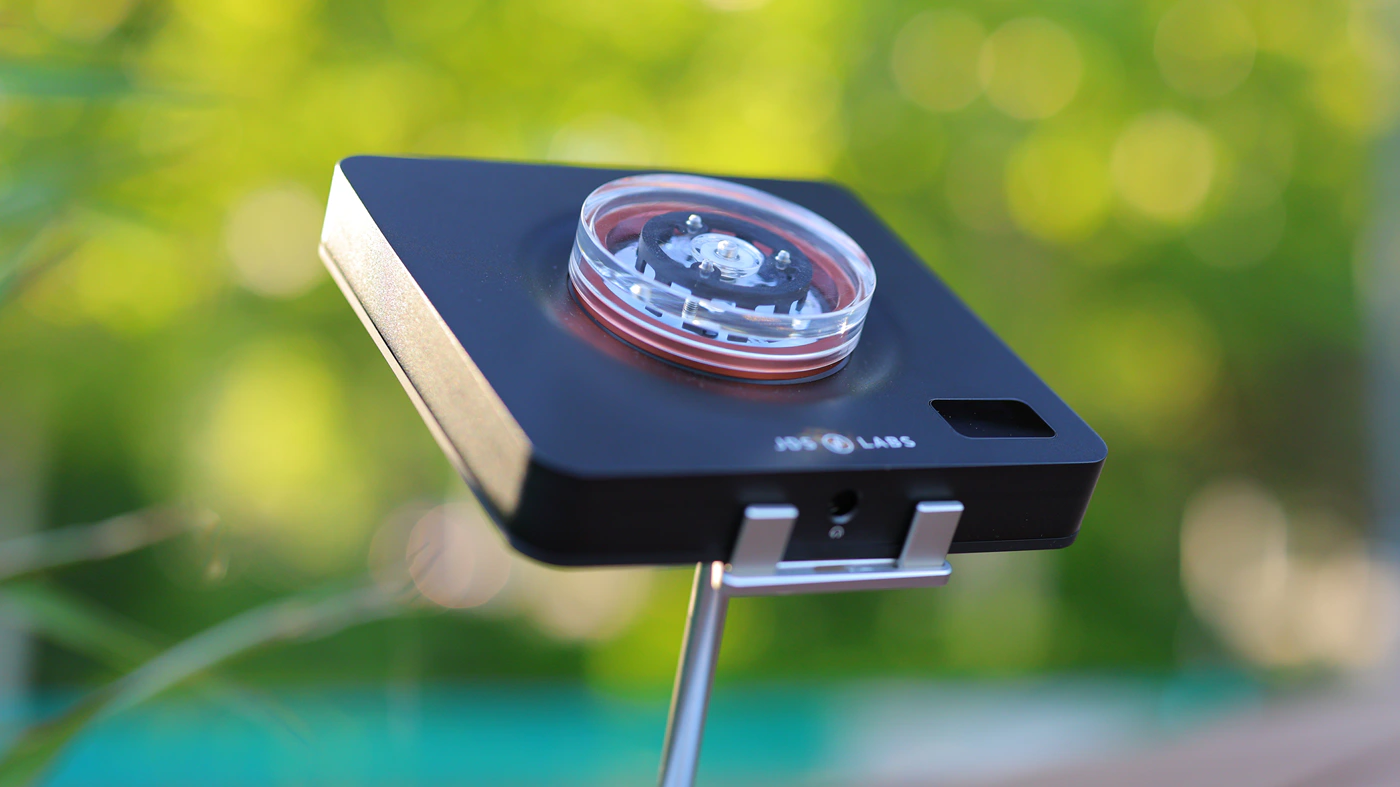
Loudness Saturation Gradient – JDS Labs Element Iv can handle both high and low volumes well, it has no bias, although the kick and punch increases slightly with a higher volume. Dynamic range is the same across all volume levels, and it handles both easy and hard to drive headphones equally well. The gain gradient is an interesting subject, because it will not allow you to increase the gain too high unless the volume and headphones really require it to. Happily, it has a good balance of power and voltage at all levels, so no IEM feels oversaturated and headphones never feel underdriven. It is better than Element III, it feeds more power earlier, providing better control and a higher headroom. As a side effect, it gets quite a bit warmer physically.

Soundstage – Element IV renders a natural soundstage, it does not expand the stage of each song, but it allows them to go up to boundless. I often found myself thinking that there’s something wrong – some certain effects and sounds can come as if they are from outside your headphones / IEMS, but most music sounds within natural boundaries. Holographic / wide songs are projected really far, music can be very distant when the recording was undersigned for it, but Element IV does not force any signature and soundstage size on the song it is playing.
Comparisons
JDS Labs Element IV vs Rose Technics RT-5000 (549 USD vs 699 USD) – There’s something out there for everyone, and while RT-5000 does not have EQ, it does have preamp output, and sounds quite amazing. The build quality is excellent for both, but design is more rustic, more interesting for RT-5000 while Element IV is industrial, cutting-edge and sharp in the design. RT-5000 has XLR Line Outs, while Element IV only has RCA, and RT-5000 has a balanced 4.4mm headphone output, while Element IV comes with just one 6.35mm headphone output. Sonically, without any EQ engaged, RT-5000 is much warmer, smoother, fuller, and thicker sounding. There is much more bass for RT-5000, while Element IV is more resolving, cleaner, and more detailed, with a considerably lower noise floor, but far more flat, without any particular sonic coloration or tilt. IF you are looking for a cutting-edge, clean and non-colored sounding DAC AMP, or if you’re looking for a professional real-time EQ, Element IV is perfect for you, while if you want something with a bit of warmth, smoothness, bass bloom, then Rose Technics RT-5000 would be best for you.
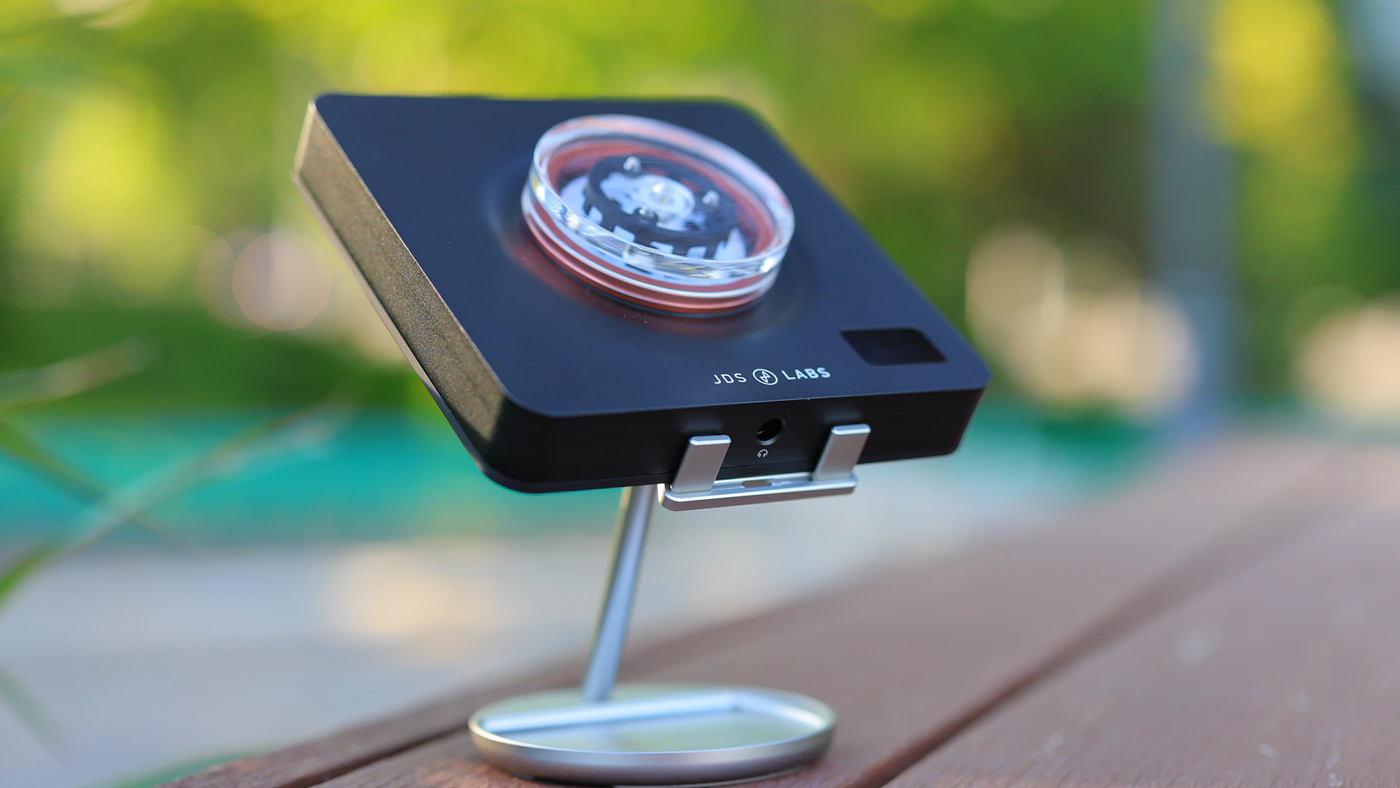
JDS Labs Element IV vs HIFIMAN EF500 (549 USD vs 459 USD) – We also have EF500 has a good competition for the ELEMENT IV, but there are a few key differences, including the fact that EF500 has XLR line outs, but it does not have volume control. EF500 is best used for full-sized headphones, it has tons of driving power, but has an audible noise floor with sensitive headphones and IEMs. Element IV has more control, a higher degree of volume control between low and high, and it still has a similar level of driving power at maximum. Both are free from USB DAC delay, but both get quite warm and even hot during usage. Sonically, EF500 is warmer, smoother in the textures, has a more organic sound with a less aggressive treble. In contrast, JDS Labs made element IV sound really flat in the FR, so it has no bass or treble tilt, but it is super revealing, aggressive, not harsh but still it is one of the most revealing DAc AMPs in the midrange price bracket.
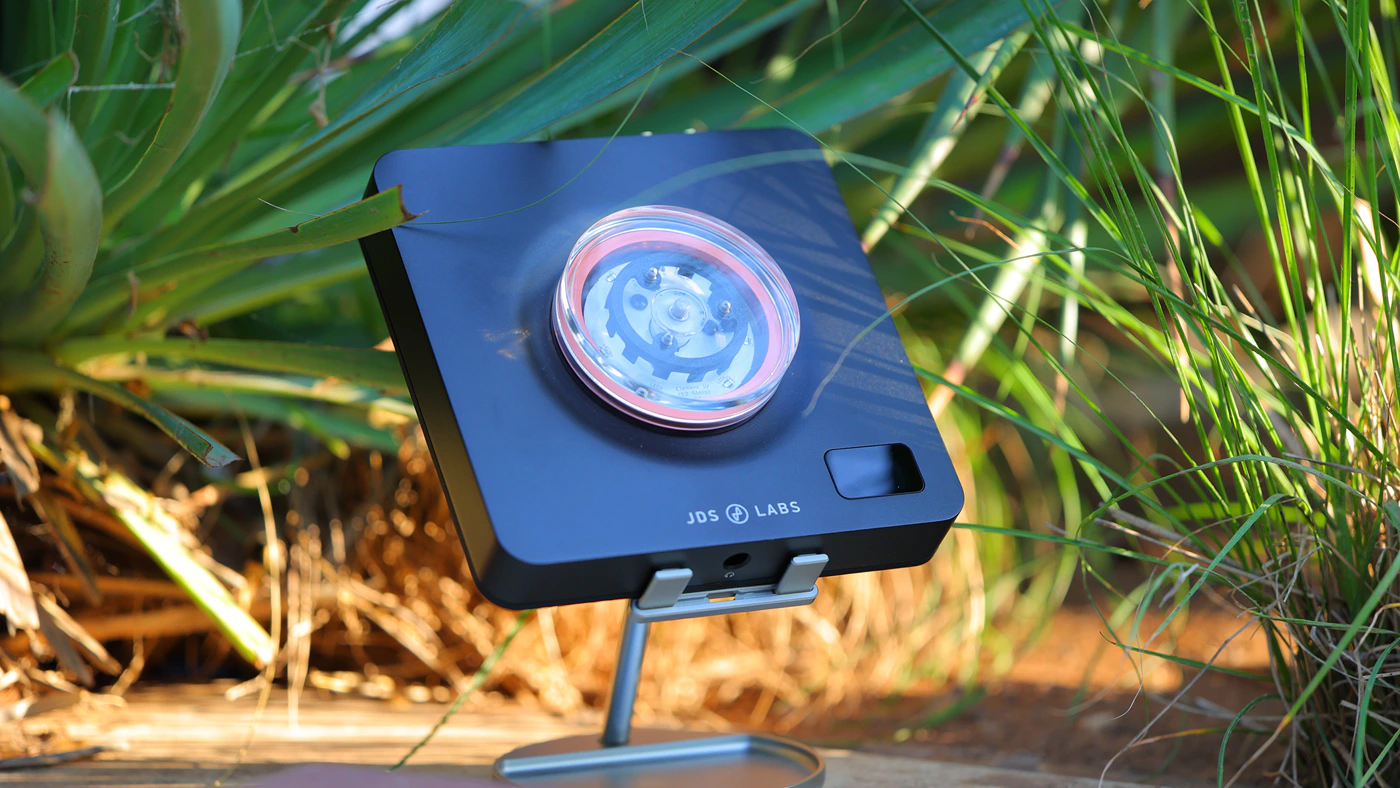
JDS Labs Element IV vs Burson Play Mate 2 (549 USD vs 544 USD) – PlayMate 2 is another good competitor for the title of the best midrange DAC AMP, but there are some key differences here too, although there are more similarities than differences. Both Element 4 and PM2 have only RCa outputs, but PM2 has a balanced headphone output. Power output of the Element IV is higher, it has a lower noise floor, and has professional EQ, but you can replace the OP-AMPs on PM2, which makes a huge difference for the sonic signature. Talking about the sound, PM2 is rather warm, smooth and lean, compared to ElementIV which sounds richer, more expansive, more revealing and more detailed. Burson has a new PM3 or Play Mate 3 upcoming that we will review, but until it hits the market, I feel like Element IV is a much better purchase.
Value and Conclusion
There are very few DAC AMPs that can pull the kind of sonic quality, real-time EQ and build quality that JDS Labs Element IV can deliver, for the low cost of the element IV, so today we bask in the greatness delivered by JDS Labs, an outstanding value for their Element IV.
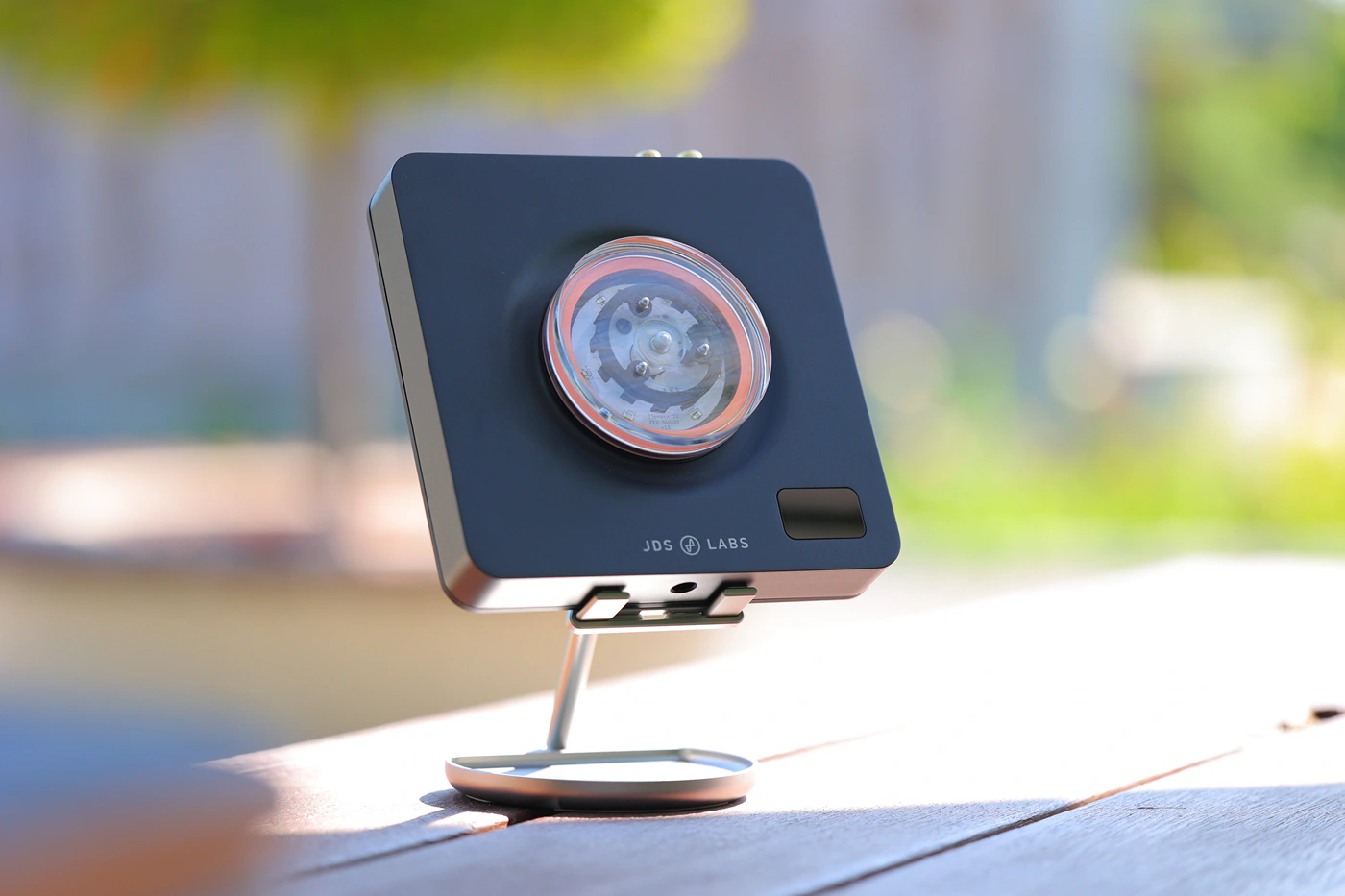
Award – In fact, before the end of this review, JDS Labs deserves to have their Element IV seated in our Hall Of Fame as it is currently the best sounding, most ergonomic and most versatile product the company ever created.
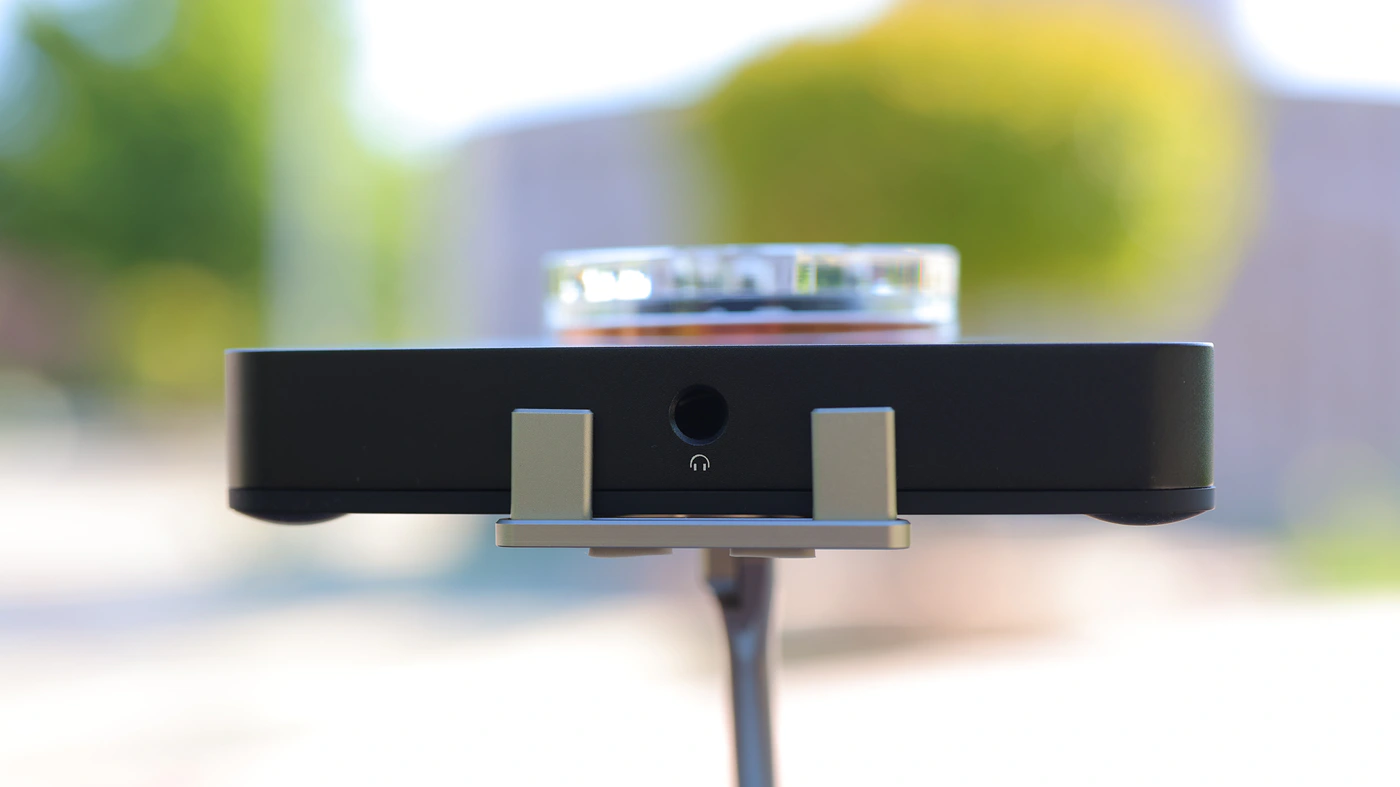
At the end of the day, JDS Labs Element IV is a testament to the progress of the JDS Labs company, it delivers everything we loved in the Element III, but improved, a better EQ implementation, more revealing, detailed and musical sound, with an improved driving power and lower background noise, all for the excellent 549 USD, being one of the best DAC AMPs you can grab today.
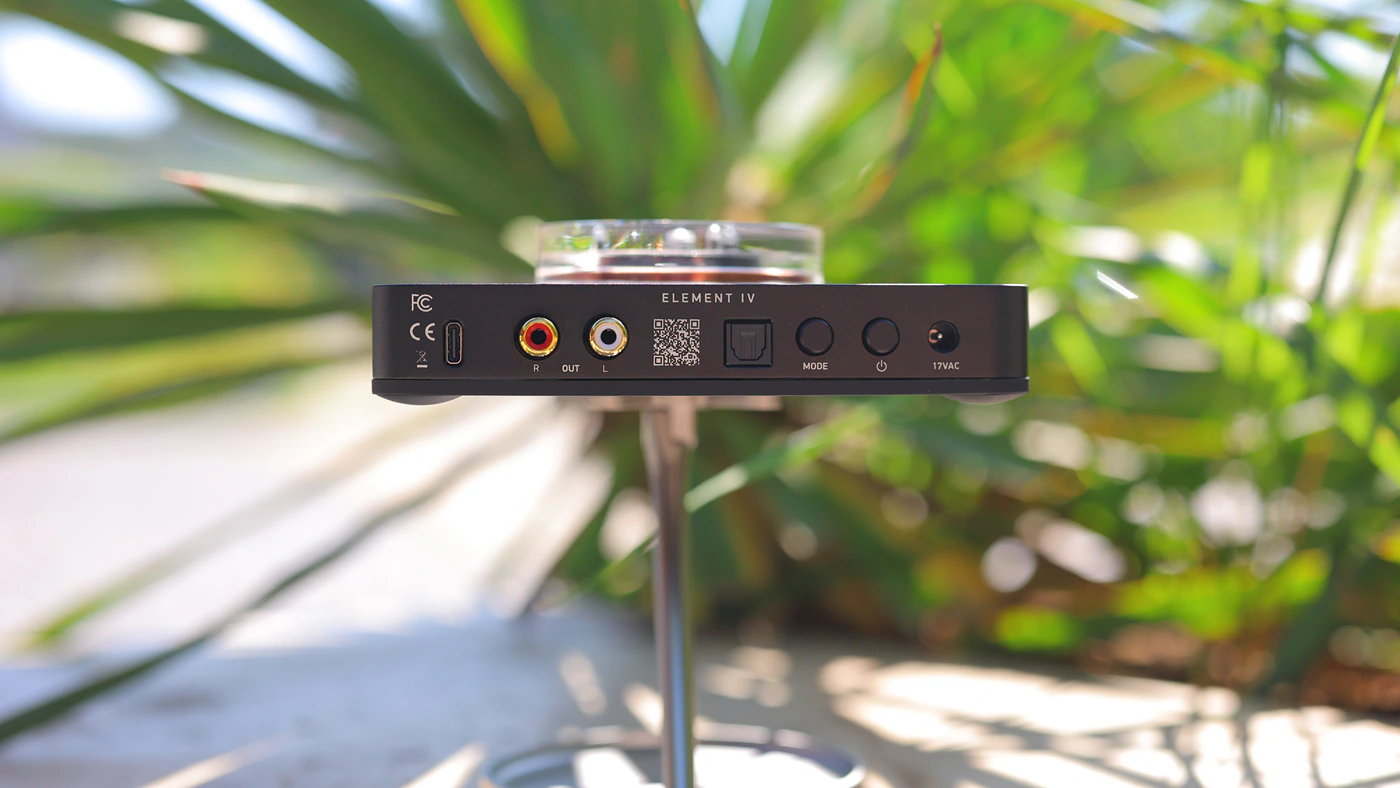
PROs
- Professional-level EQ that works with USB input and all content, including videos
- No delay on the USB DAC input
- Headphone output has no background noise, it is silent, clean and has outstanding driving power / control
- Natural, organic, but highly resolving sound
- Balanced signature with very low distortion
- High headroom for driving hard to drive headphones, or using aggressive EQ
- Solid build quality, with a power adapter that has a really long cable
- One of the best price performance ratios you can grab today
Cons
- Runs really hot during usage
- Transparent volume wheel is fingerprint magnet
Product Link
Amazon – https://amzn.to/41xYgUf
Official Link – https://jdslabs.com/product/element-iv/
--- Please remember to stay safe, and always have fun while listening to music!---
- If you have a dime to spare, please donate, and help us! It would make the day brighter for me and my wife-
Full Playlist used for this review
We listened to more songs than those named in this playlist, but those are excellent for identifying a sonic signature. I recommend trying most of the songs from this playlist, especially if you’re searching for new music! The playlists are different for Spotify, Tidal and Youtube, and based on the songs I enjoy and are available on each!
https://www.youtube.com/playlist?list=PL_cjBXGmwSHSdGcwuc_bKbBDGHL4QvYBu
https://open.spotify.com/playlist/5J3oloz8Riy9LxEGenOjQ0?si=979ba4f082414be7
https://tidal.com/browse/playlist/330fd544-8e5b-4839-bd35-676b2edbb3d5
--- Contact Us ---





